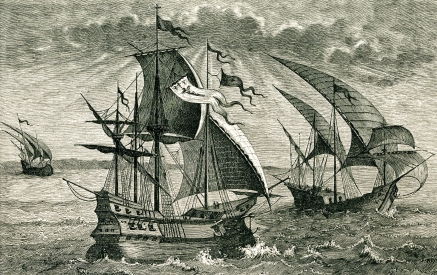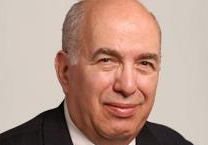The Second Conquest of Central America

Almost 500 years have passed since the first Spanish conquistadores arrived in Central America. They rapidly became attracted to its hard-working labor force and rich natural resources. Eventually, Europeans ended up controlling the region for more than three centuries before the Central American countries declared independence from their mother country.
Loyal to its legacy, the region continues to be viewed by foreign countries as a promising land of opportunities. Nowadays, a new partner from within the Americas is betting on Central America’s business future.
Discovering Central America’s Appeal
Colombia is the 29th largest economy in the world, with 45 million people and a GDP of US$500 billion. Although it is an important oil and mineral producer, Colombia is best known for the premium quality coffee it exports. The country is also home to AviancaTaca and Bancolombia, two of the Latin American corporate icons from the airline and financial services industries, respectively.
A few years ago, both firms started to explore northward into Central America as a way to increase their international operations. They discovered it was the right direction for their expansion strategy. Central America had the same population size as Colombia but produced half of the economic output of its southern neighbor. Besides the simple math being attractive, Central America had a special appeal to Colombia for five reasons:
- A geographic location with close proximity to the North American market, enhanced by the importance of the Panama Canal as a link of inter-oceanic trade.
- A resilient economy that had coped successfully with the recent financial crisis and since then growing at a sustained pace above 4%.
- A politically stable society embracing the free market system with solid democratic institutions that advocate for investors’ rights.
- An increasing degree of competitiveness leveraged by a productive and well-educated workforce.
- A cultural affinity with Colombia, sharing a similar heritage and ways of doing business.
Conquering the Central American Market
The stories of Avianca and Bancolombia demonstrate how investing in Central America created additional enterprise value for their franchises, raising the standards of competition of the airline and financial services sectors.
Avianca’s Merger with TACA Airlines
Avianca was the largest airline in Colombia and the world’s second oldest still in operation, founded in 1919. It was headquartered in Bogota, Colombia’s capital city. In 2009, it was announced that Avianca would merge with TACA, the largest Central American passenger carrier, founded in 1931. TACA was a conglomerate of individual airlines from each of the Central American countries. The new holding company that resulted from the strategic consolidation was composed of 67% Avianca owners and 33% TACA owners. It was rebranded AviancaTaca.
Today, AviancaTaca is a company of 13,000 employees and carries almost 24 million passengers annually, up 13% from a year ago, with a modern fleet of 149 aircraft (mostly Airbus and Embraer). Besides owning cargo operations, AviancaTaca has the largest network in Latin America, serving more than 100 destinations globally, 75 of which are cities in the Americas. The company generated last year US$3.6 billion in revenue and US$110 million in net earnings, making it the fourth largest airline group in Latin America, behind competitors LAN, TAM, and Gol.
The airline’s hubs are located in El Salvador, Costa Rica, Colombia, and Peru. Furthermore, AviancaTaca has built a loyal customer base through its program LifeMiles, which has reached 4.4 million frequent flyers to date. In June 2012, the company joined the Star Alliance, the world’s largest global airline alliance with 28 member airlines, allowing it to expand its geographic reach through code share agreements. Although both Avianca and TACA have maintained their own identities since the merger was completed, they agreed recently to operate jointly by mid-2013 under a unified brand. Favorable headwinds will most likely ensure a promising future for the new AviancaTaca.
Additional information can be found here.
Bancolombia’s Acquisition of Banagricola and Other Banks
Bancolombia, founded in 1945, is the largest full-service financial institution in Colombia, with US$51.2 billion in assets and US$6.2 billion in equity as of September 2012. In 2007, it made its first international incursion by acquiring Banagricola for more than US$900 million; Banagricola is a financial holding company that owned El Salvador’s largest bank and other subsidiaries. Its solid numbers, including a 28% local market share, helped boost and diversify Bancolombia’s revenue while reducing overall risk concentration and positioning it as a key player in Central America. Soon, Bancolombia established a competitive platform for growth in the region, with a sound balance sheet and consistent performance, covering services from corporate and retail banking to asset management, brokerage, pensions, insurance, leasing, and factoring.
In December 2012, Bancolombia announced that it would acquire 40% of Banco Agromercantil from Guatemala for US$216 million while agreeing to buy up to 75% over the next seven years. Two weeks ago, it also agreed to acquire HSBC’s Panama unit, the second largest bank in Panama, for US$2.1 billion for 100% of common shares and 90.1% of preferred shares. The acquisition of HSBC will strengthen its current presence in Panama and will allow it to become the largest bank in Central America, with market leadership in that country and El Salvador, the region’s dollarized and most stable economies. In fact, Bancolombia’s largest operation in Central America will be located in Panama, the financial center of the region growing with the highest GDP rate in all of Latin America for the last five years, averaging an impressive 9% per year.
Favorable headwinds also blow for Bancolombia’s footprint in the Americas, including Colombia, El Salvador, Panama, Peru, Puerto Rico, Cayman Islands, and Miami. Its investment grade credit rating provides strong support to its strategy.
Additional information can be found here.
Investing Directly in Avianca and Bancolombia
How can foreign investors add exposure to AviancaTaca and Bancolombia, whether it is for return enhancement or risk diversification purposes? There are two ways that they can do this.
Buying shares in the Colombian stock exchange
Foreign investors can buy preferred shares from AviancaTaca in the Colombian stock exchange (symbol: PFAVTA). The closing price on 28 February 2013 was 4,585 Colombian pesos (COP), or US$2.53 per share. The 52-week range was COP3,460–COP4,740, with a one-year return of 9.80%. PFAVTA trades at an estimated P/E of 16.
Additional information can be found here.
Common and preferred shares from Bancolombia are also available in the Colombian stock exchange (symbols: BCOLOMBIA and PFBCOLOM). The closing prices on 28 February 2013 were COP28,800 for common and COP29,800 for preferred. Both types of shares paid quarterly dividends in 2012.
Additional information can be found at Bancolumbia’s website.
Buying ADRs in the NYSE Euronext
Of the two companies, Bancolombia is the only one with an ADR (American depository receipt) listed in NYSE Euronext. The ADR was first listed on 26 July 1995 (symbol: CIB). Its closing price as of 28 February 2013 was US$64.94, with a 52-week range of US$53.78–US$70.62. CIB trades at 9.7 times its earnings, compared with an average of 12.7 times over the previous five years. EPS growth in the last three years has been around 8.8%, with a dividend yield of 2.5%.
An investor may find it more convenient to buy Bancolombia ADRs rather than to directly purchase Bancolombia common or preferred shares in the Colombian stock exchange because of the increased liquidity of the ADR market in NYSE Euronext.
Additional information can be found on Morningstar.
Conclusion
An ocean of business opportunities lies ahead for Central America. The region will continue to entice foreign investors as long as political stability, economic growth, and structural competitiveness are upheld and protected in the regional agenda. It seems clear that Colombian businesses have ensured a first mover advantage while Central America is benefiting from increased foreign direct investment. Investors have the opportunity to enhance returns or diversify risks from equity exposure in well-managed Colombian/Central American companies, located within growing sectors and headquartered in politically stable and economically dynamic environments.
If you liked this post, don’t forget to subscribe to Inside Investing via Email or RSS.
